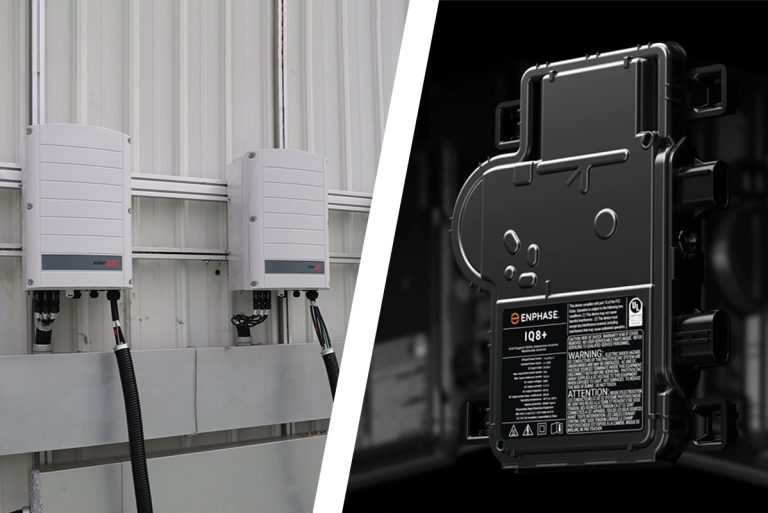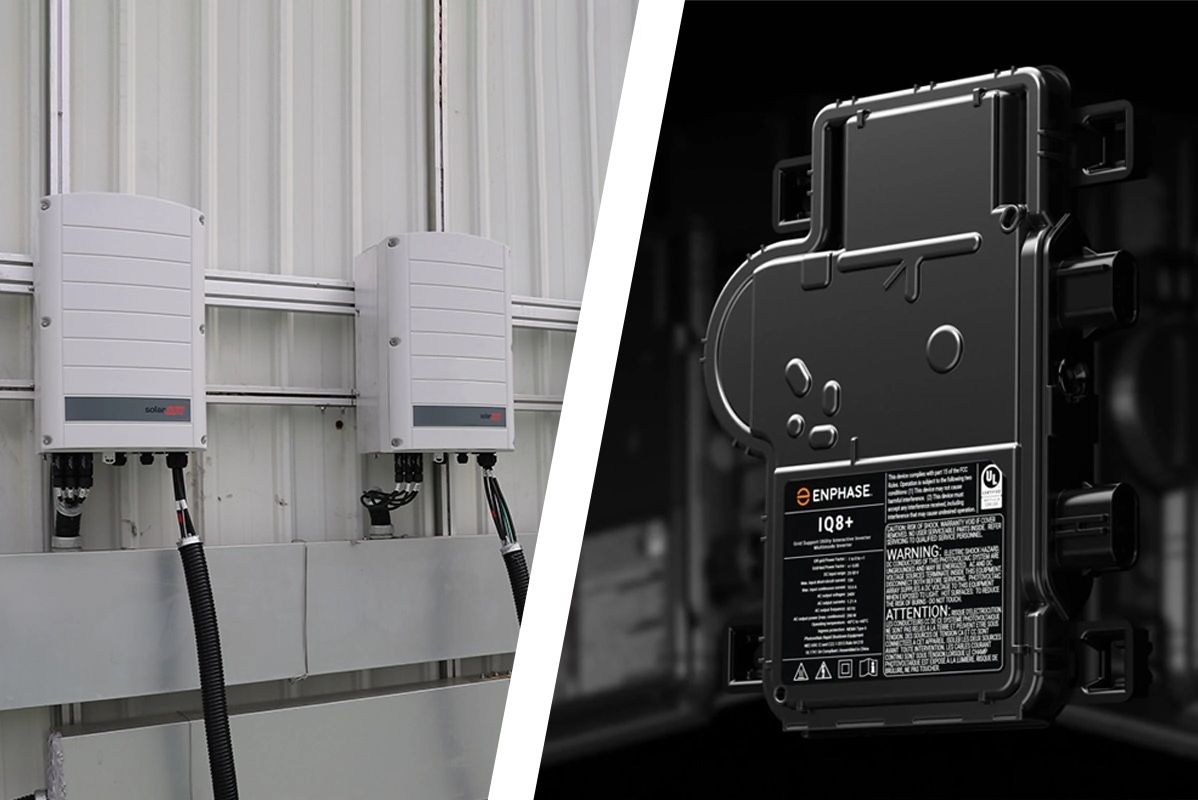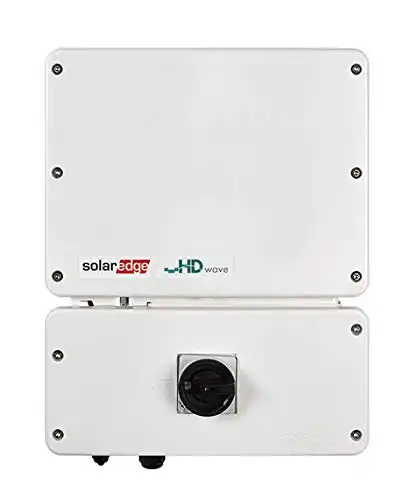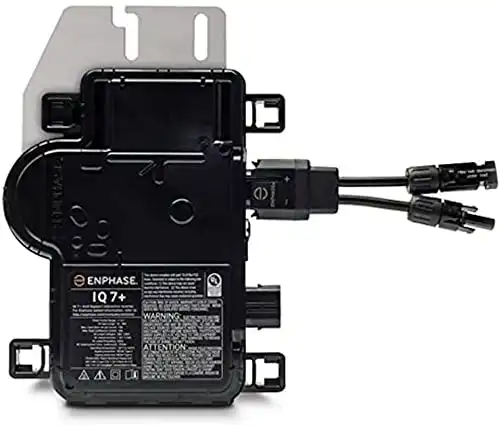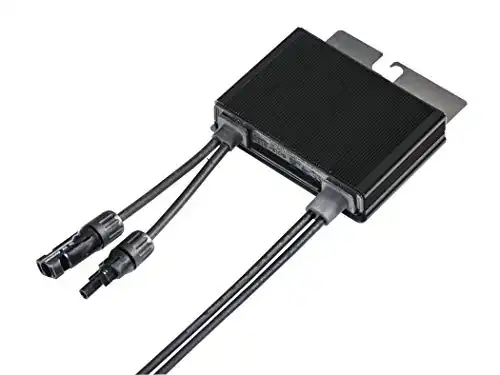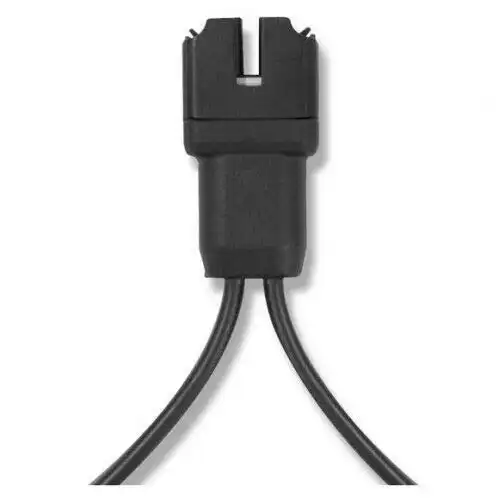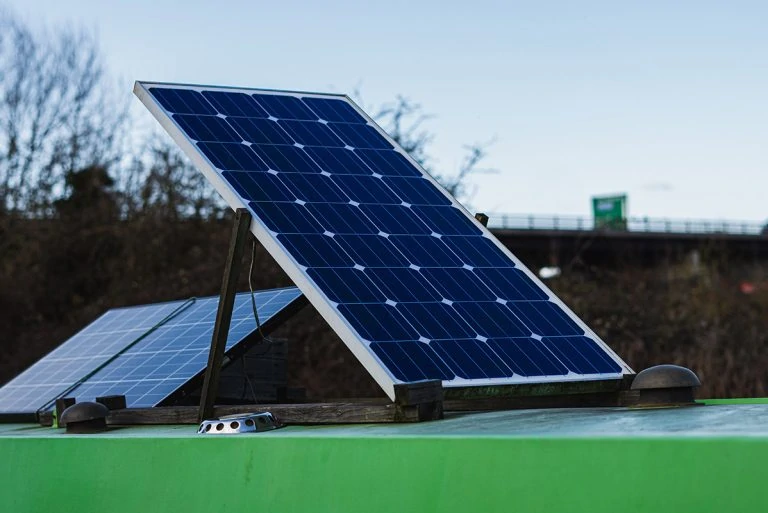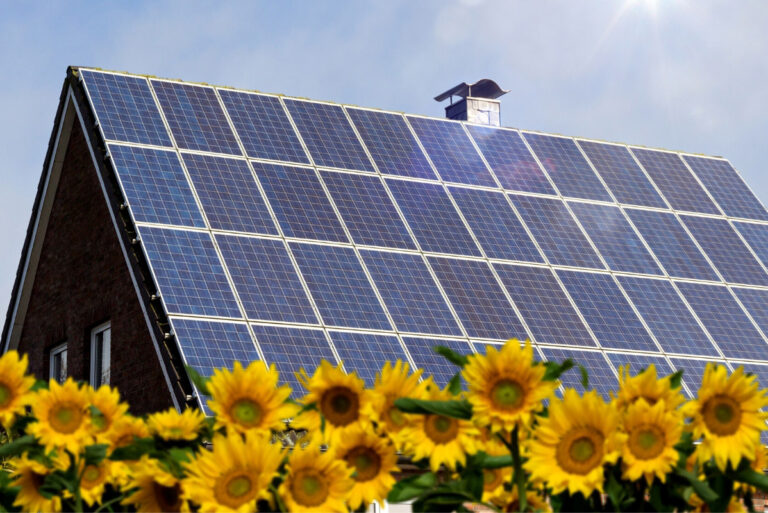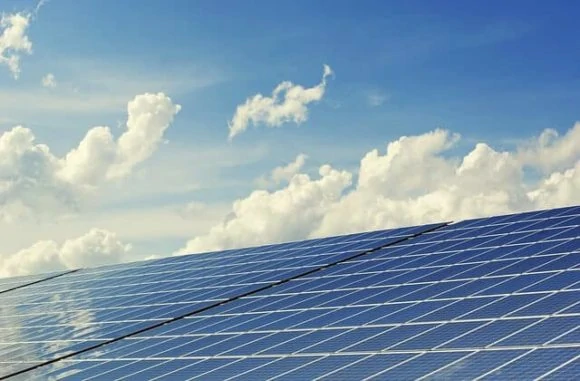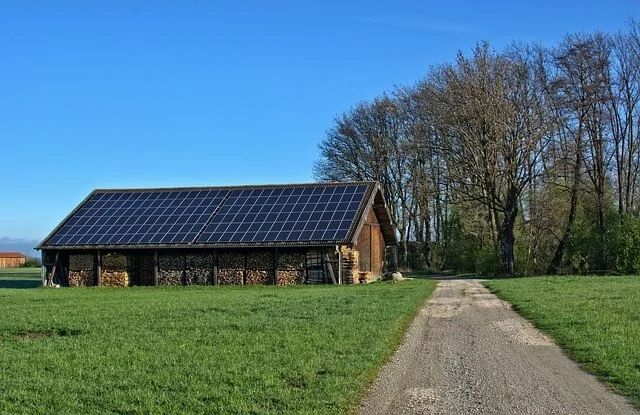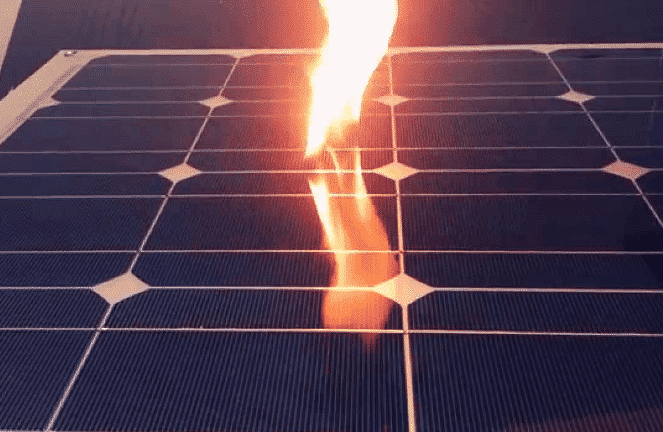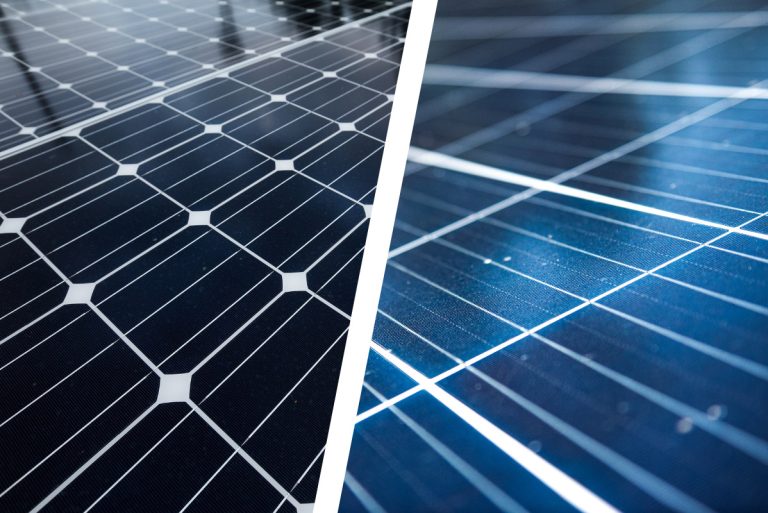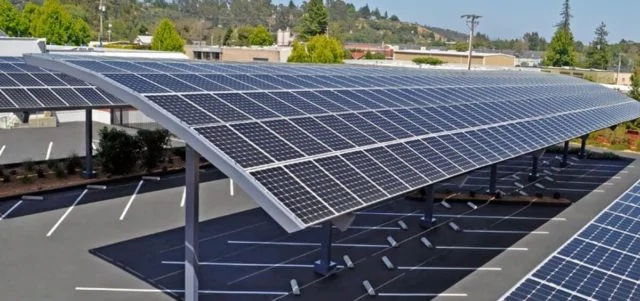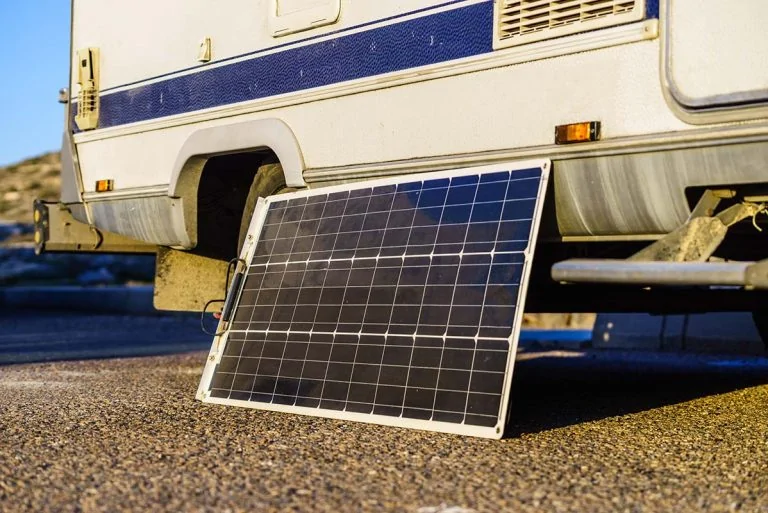In the solar industry, SolarEdge and Enphase are two of the biggest names when it comes to inverters, optimizers, and microinverters. When choosing between SolarEdge vs. Enphase it’s important to understand the differences between their products.
SolarEdge vs. Enphase: key differences
SolarEdge and Enphase are the world’s leading manufacturers of solar inverters. Collectively, they represent 95% of the global market for these products.
They also lead the market in the US, with no competitors coming close to their market share. Although they’re often seen as direct competitors, their system configurations are actually quite different, so it’s important to understand the differences between these brands and their products.
Inverters are an essential part of any solar system: this key component makes it possible for virtually anyone to set up and run a home solar system. Essentially, the purpose of an inverter is to convert direct current (DC) into alternating current (AC).
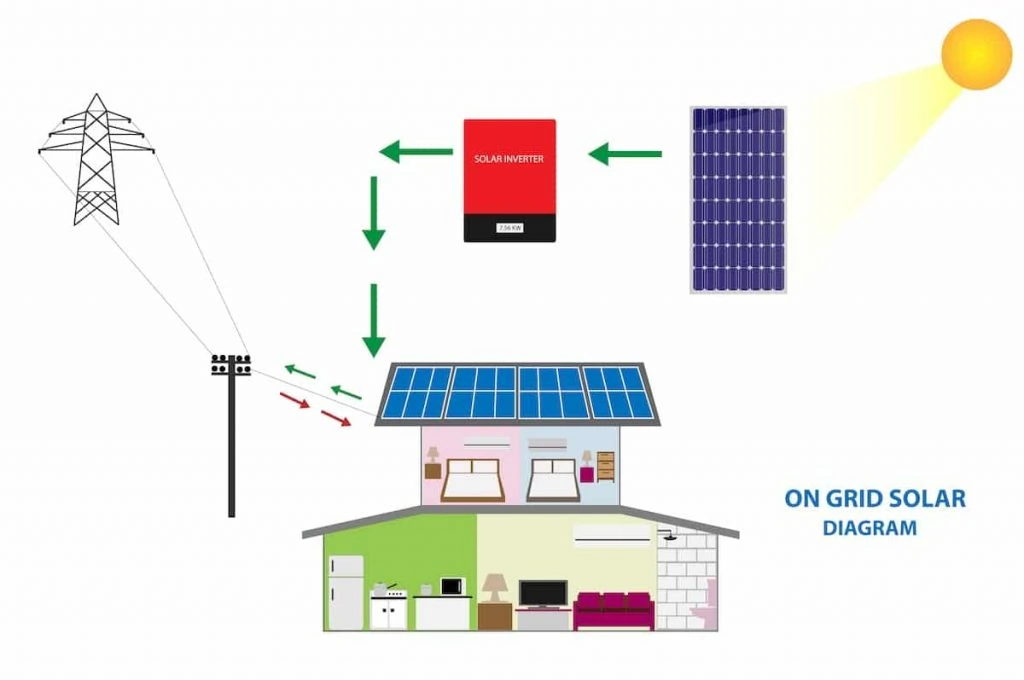
Photovoltaic (PV) solar panels absorb the sun’s rays and convert their light into energy, which is produced in the form of DC electricity. However, the appliances in our homes run on AC power, so in order to use the power generated by the solar panel, you first need to convert it to AC.
This is what solar inverters do, as well as performing Maximum Power Point Tracking (MPPT), which ensures that the panels are working optimally before voltage conversion. In this way, inverters guarantee that you get the maximum power output from your solar system, and have as much energy as possible to power your devices and appliances.
While Enphase’s solar systems are configured around microinverters that both optimize and convert the current coming from the panel, SolarEdge uses power optimizers on the panels with separate inverters. Therefore, in Enphase’s configuration, the current is already converted to AC when it leaves the panel, while, with SolarEdge this conversion happens later.
Let’s talk a little about each company, what they do, and who their products are best suited to.
SolarEdge vs Enphase: Who are SolarEdge?
SolarEdge is based in Israel and, as a major supplier of inverters, is the leading manufacturer of power optimizers in the US, with a market share of around 60%. Although they also provide commercial and electric vehicle solutions, SolarEdge focuses mostly on residential applications.
SolarEdge’s systems are configured with module optimizers, meaning there is a power optimizer on each solar panel. Each individual optimizer maximizes the current coming from the PV unit before it is sent to a central or string inverter.
The inverter can be installed away from the PV units, such as in your garage or house, as it doesn’t need to be located next to the panels.

In short, rather than performing power optimization and current in a single device conversion, SolarEdge’s systems rely on two separate pieces of equipment for each function.
Their signature power optimizers balance or “condition” the DC current produced by the solar panel, maximizing its efficiency and ensuring it delivers the maximum amount of power. This current is then sent to a separate power inverter that converts it into AC so that it can power regular household appliances and devices.
SolarEdge’s power inverters are designed to work with their power optimizers and vice-versa.
These systems can use of either central or string inverters:
- Central inverters: Central inverters receive the total voltage from all of the solar panels in your system and convert the current from DC to AC. They allow you to set up a simplified system that is easy to design, install, and track the power output in the whole system, with minimal up-front costs. However, they may compromise on safety, can be more expensive to wire, and make it harder to expand your system in the future.
- String inverters: These are essentially a hybrid between central and microinverters, with a chain of inverters which are separate from the solar panels.
These systems are generally more affordable than configurations that rely on microinverters, such as Enphase’s model. According to SolarEdge, their approach allows you to maximize your system output at a lower cost than with microinverters.
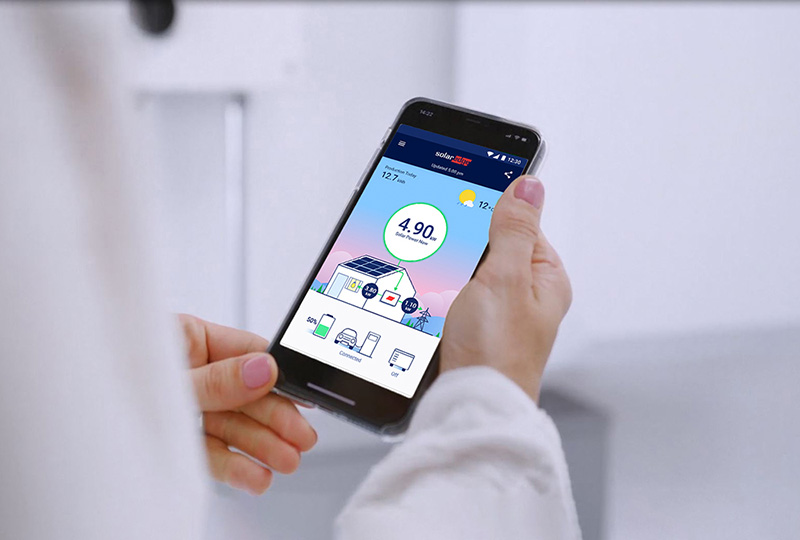
What sets SolarEdge apart from other systems that use central and string inverters is that you can monitor the performance of the panels individually using their monitoring app. Using the app, you can activate and configure your system, as well as monitor its performance and check for issues, all from your smartphone.
Something that sets SolarEdge apart from their competitors, including Enphase, is that they were the first manufacturer in the world to offer a combined electric vehicle (EV) charger and solar inverter. The ultimate product for eco-friendly drivers, its system allows you to charge your vehicle using solar energy, with charging speeds two and a half times faster than other EV chargers.
SolarEdge vs Enphase: Who are Enphase?
Based in California, Enphase manufactures the most popular microinverter for sale in the US, having long supplied famous brands such as SunPower and Panasonic. This means if you buy a solar panel from either of these companies, it will come equipped with an Enphase microinverter.
Like SolarEdge power optimizers, Enphase’s microinverters are coupled to each solar panel on your roof. However, the key difference is that each device conducts both power optimization and conversion on your roof, rather than connecting to a separate inverter.
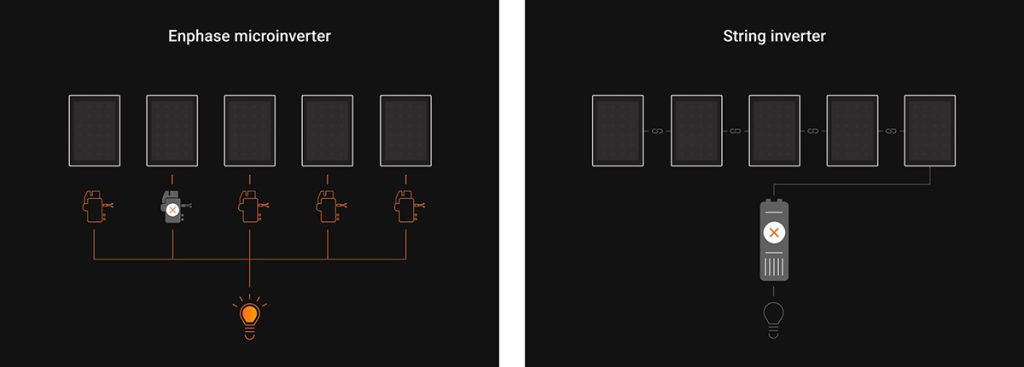
Under this configuration, the current is converted to AC power before it leaves the panel.
Each microinverter contains a self-contained inverter with an integrated MPP tracker, which is the ultimate smart solar system that is safer and more efficient than configurations with central or string inverters. Each panel is controlled separately, so if one panel experiences partial shading or has a power failure, the microinverter can make sure that this doesn’t impact the system overall and you still enjoy a constant supply of power.
Additionally, because there is less DC wiring required, there is a lower risk of fire or electric malfunction, making them safer. These systems are also highly flexible, making it easier to expand them at a later date if required.
On the other hand, these are highly complex systems that involve a larger upfront investment and higher maintenance costs.
Enphase is a leader within the world of microinverters, and they’ve also moved into offering energy storage products. Their battery, Encharge, will store the power generated by your solar panels so that you can rely more on renewable energy and less on the grid even at night.

They also offer Ensemble kits that include backup storage as well as a smart inverter that can detect power outages and automatically switch to backup battery power. This means you’ll never need to worry about power outages, as the system will automatically switch over to stored solar energy when required.
You can set your system to provide backup power to all of your home appliances and devices in case of an outage, or only a few emergency devices. This level of flexibility allows you to choose a full or partial home backup depending on your power needs and how much solar energy you have.
Like SolarEdge, you can manage your Enphase system from your smartphone using their Enlighten app. The app lets you check a range of metrics, like how much energy your panels are producing, your power use, and how much is stored in your battery.
You can even connect the Enlighten app to a virtual assistant and control everything using voice commands.
The best SolarEdge and Enphase products
For a better insight into SolarEdge vs Enphase, let’s take a look at some of the best products offered by each brand, and how you can use them in your solar system.
You can also take a look at our list of the best SolarEdge products for more top picks from the brand.
1. SolarEdge Single Phase Inverter with HD-Wave Technology
This central inverter is designed to convert all of the DC current from your solar system into usable AC current. It used advanced HD-wave technology to make this conversion as efficient as possible: with a weighted
This means you keep almost all of the energy generated by your solar panels, and get to use it to run your home’s lighting, appliances, or devices, instead of losing it in the conversion. Therefore, you’ll be able to reduce your reliance on the grid further and save on your power bills.
The inverter connects wireless to SolarEdge’s mobile app, which you can use to control your system, as well as monitor performance, and troubleshoot issues. On the downside, as with a centralized inverter, it involves extensive DC wiring to carry the DC current from your solar panels to the inverter, which means an increased risk of fire or electrical faults.
However, this product does come with inbuilt safety features to minimize overheating and avoid equipment failure and other issues. Furthermore, it’s backed up with a 12-year warranty which is expandable up to 25 years, so you can feel confident that any issues you experience (though unlikely), will be resolved.
2. Enphase IQ7PLUS-72-2-US Microinverter
Suitable for both home and commercial use, this microinverter is designed for solar panels with an output between 235 and 350 watts. The device has 97% CEC efficiency, allowing you to maximize the power you get from your solar panel.
The microinverter comes in a polymeric enclosure and innovative wiring system, making it easy and safe to install. This makes it ideal for beginners who want to set up a solar system for the first time.
It comes with a built-in rapid shutdown feature, which will automatically shut down the microinverter if it detects a fault. This helps to improve safety as well as protect your equipment, meaning that it will last you longer and save you money in the long run.
Furthermore, because the current is converted to AC power before leaving the solar panel, this eliminates the need for potentially-risky DC wiring, making your system safer and more reliable overall.
3. SolarEdge P320 Power Optimizer
SolarEdge offers a range of power optimizers that connect directly to the solar panel and optimize the DC power current before sending it to an inverter to be converted to AC power. This allows you to get the maximum yield from your PV units, with 99.5% peak efficiency and 98.8% weighted efficiency.
They also include a tracker that monitors the panel’s Maximum Power Point (MPP). You can then connect the optimizer to SolarEdge’s mobile monitoring app, and use this to track the performance of each solar panel.
This allows you to check that each panel is running optimally, and troubleshoot any issues as soon as possible. This is great because it not only means you can ensure your system is running at peak performance, but you’ll also avoid any serious equipment damage by addressing problems early on.
Solar Edge’s P320 power optimizer is rated for up to 320W of DC output, so is suitable for solar panels up to this wattage, with fixed-string voltage. This makes it highly versatile, as it can be used with either string inverters or a central inverter.
4. Enphase Q-12-10-240 Q Cable
Enphase’s Q cable is a continuous length of cable featuring a number of connectors that you can easily connect to a series of Enphase microinverters across your solar system. Because it includes a chain of connectors on a single wire, this eliminates the need for complex or messy wiring, allowing you easily and neatly install your entire solar system.
Each connector is numbered for easy installation and has plug-and-play functionality, so you don’t have to be an expert to install them.
The Q-12 cable is designed to connect to Enphase’s IQ series microinverters and is rated for outdoor use, so will stand up to all kinds of weather conditions. This is essential, given that it needs to connect to your solar panels that are probably installed on your roof!
The versatile cable can be cut, spliced, and extended, so you can adapt it depending on how many solar panels and micro inverters you have in your system. It’s also 50% lighter than the previous generation of Enphase cable, so is great for roofs that can’t support too much weight and makes it even easier to install.
SolarEdge vs Enphase: stand out features
SolarEdge and Enphase both offer excellent products that allow you to convert the current coming from your solar panels to AC power that you can use to run your household appliances, while maximizing the power yield of your system.
Each brand has its pros and cons that make it more suited to certain consumers.
SolarEdge is all about helping you set up an efficient, safe, and reliable solar system at a cost-effective price.
SolarEdge’s products may be right for you if:
- You don’t have the budget to invest in a series of microinverters
- You’re looking to maximize the return on your investment in solar panels and associated equipment
- You have an electric car, or are planning to buy one in the future
On the other hand, Enphase aims to make your home energy system a smart asset you can rely on whether or not you’re connected to the grid, and avoiding the potential risks associated with centralized systems.
You should opt for Enphase if:
- You prefer microinverters over central or string inverters
- You’re passionate about smart grids
- An Enphase system is within your budget
- You’re unlike to buy an EV in the coming years
SolarEdge vs. Enphase: which is better?
When it comes to Solaredge vs. Enphase, it essentially comes down to cost vs. efficiency and reliability.
SolarEdge’s systems are ideal for budget-conscious people that don’t want to invest in an expensive microinverter setup, but want to have a high degree of monitoring and control. Enphase’s products are a good choice for people who want the most efficient, reliable system, and are prepared to invest more to achieve this.
Having said that, SolarEdge still offers high-quality, safe products that will allow you to achieve a high level of efficiency in your solar system. Additionally, they have a unique line of products that Enphase doesn’t offer: combined inverter and EV chargers.
For more on SolarEdge’s products, check out our top picks from the brand or the best solar inverters.
